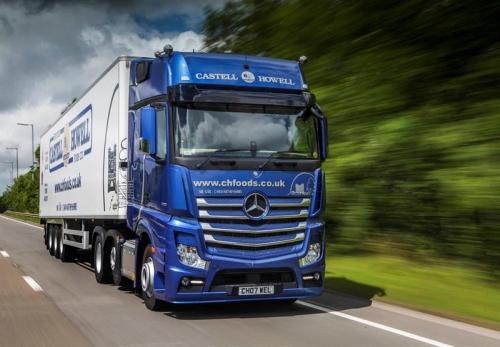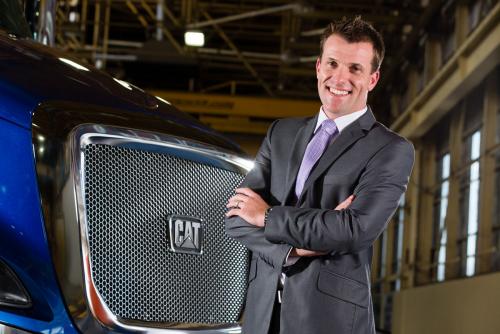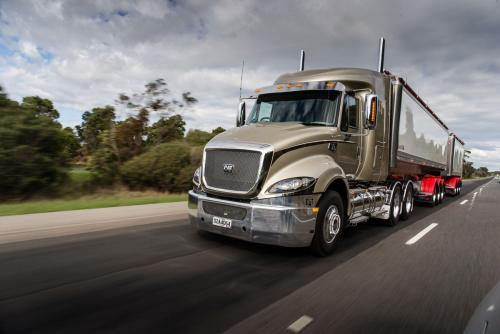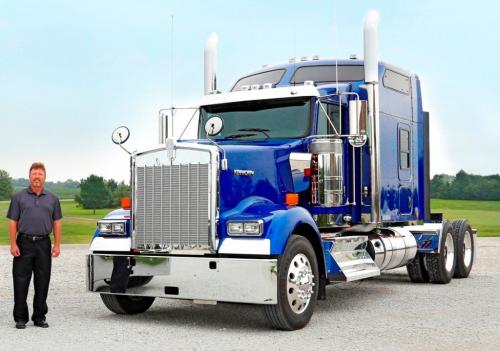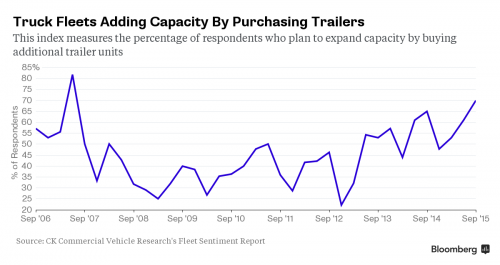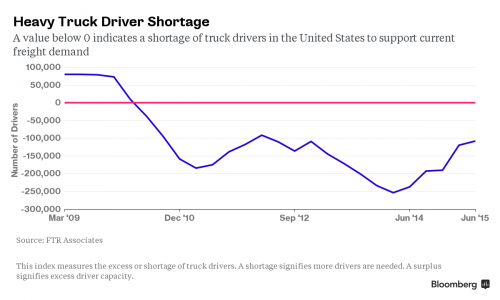
kscarbel2
Moderator-
Posts
18,541 -
Joined
-
Days Won
112
Content Type
Profiles
Forums
Gallery
Events
Blogs
BMT Wiki
Collections
Store
Everything posted by kscarbel2
-
Transport Engineer / August 19, 2015 Castell Howell Foods is now running the first two of its order for 23 new Mercedes-Benz and Fuso trucks – a pair of flagship 510bhp Actros 2551 tractor units pulling temperature-controlled Chereau semi-trailers. The Cross Hands, Pembrokeshire-based independent wholesaler, famous for its Celtic Pride Premium Beef brand, has also just commissioned 10 fridge-bodied Atego rigids. They comprise four 15-tonne 1524s and six low-frame 12-tonne 1224 LnRs, all of which arrived via the Swansea branch of Euro Commercials. The dealer is currently processing orders for a further six 15-tonners and four more 12-tonners, as well as a 7.5-tonne Fuso Canter 7C18. Some of the new vehicles are replacements for ageing assets on its 108-strong fleet, but others are fleet additions acquired to meet growing customer demand, according to Castell Howell director of transport operations Martin Jones. "The tractor order came down to a straight fight between Mercedes-Benz and one other manufacturer," states Jones. "In the end it was decided by driver choice… We tried demonstrators and they preferred the Actros for its spacious and comfortable cab, with the driving position winning particular praise." And Jones says the responsiveness and low noise of the Mercedes Actros 510bhp engine also won plaudits." Castell Howell Foods runs mostly -sized rigids, roughly half of which are Mercedes-Benz vehicles supplied by Euro Commercials. The operator also runs 12 Mercedes-Benz Sprinter vans, which make special and emergency deliveries, each covering upwards of 100,000 miles a year. Jones says the new Actros are typically working at 37—38 tonnes gcw, and says the firm is "very pleased" with their fuel efficiency. "Even on a challenging route out of West Wales we're getting close to 10 mpg, while on motorway routes they'll often top 11," he says. "We picked the GigaSpace over a day cab because, although the drivers don't spend nights away in their trucks, they do travel reasonable distances during which our new fleet flagships double as great mobile advertisements for the business." Castell Howell Foods has been operating Mercedes-Benz Atego rigids for more than a decade. Its latest examples are powered by Mercedes 238bhp six-cylinder engines, designed to combine high-torque at low revs with good fuel economy. Says Jones: "The Euro 6 [Atego] represents a big step forward compared to the previous version. The turning circle is better, as is the engine performance, while the intelligence and anticipation of the PowerShift 3 automated gearbox is also very good." The 15-tonners have been allocated to urban routes and deliver to larger, contract customers, where their load volume and payload capacities shine. The 12-tonners have been assigned to rural duties, where their reduced height is a important. "We get a lot of overhanging trees in the lanes of West Wales, and like to keep the trucks as low as possible to minimise body damage," explains Jones. And he adds: "We maintain our rigid vehicles and vans locally, with the help of regular parts deliveries from Euro Commercials, but the dealer is inspecting and servicing our new Actros under R&M contract." .
-
Fleet Owner / August 19, 2015 “The fact is that vehicle manufacturers must have the flexibility to optimize the complete vehicle design for maximum efficiency at the lowest cost and complexity. Minimizing total cost of vehicle ownership is a top priority for our customers.” —Paccar's Dan Kieffer, speaking on behalf of all four North American heavy-truck OEMs “As a result of SuperTruck and our own internal technology development programs, Cummins is confident we have the engine technologies necessary to meet or exceed improvements required by the Phase II engine standards." —Brian Mormino, Cummins “Unfortunately, the Phase 2 proposal is not sufficiently stringent to drive market development of hybrid, electric, or fuel cell technologies. To actually offset the expected truck activity growth, advanced, near zero emission technologies must be a significant part of the long-term solution." —CARB Chair Mary Nichols The second public hearing on proposed truck fuel efficiency and greenhouse gas emissions standards shaped up much like the first: Trucking industry representatives expressed qualified support for the stringency goals and implementation schedule outlined by the Environmental Protection Agency (EPA), while air quality regulators and environmental groups called for tougher restrictions and a tighter timeline. And within trucking there is a divide over exactly how the engine and complete vehicle should be measured. The big four North American heavy-duty truck manufacturers (Daimler Trucks North America, Navistar, Paccar and Volvo Trucks North America) spoke with one voice Tuesday, as Dan Kieffer, director of emissions compliance for Paccar, delivered a statement on behalf of all. Calling the Phase II rule “historic in its scope and complexity,” Kieffer noted “a long list of technical and protocol issues” the truck makers will work closely with EPA and the National Highway Transportation Safety Administration (NHTSA) to resolve. “EPA and NHTSA have set very ambitious goals for this industry, and we will do everything we can to ensure that this regulation will translate into significant real world efficiency gains for our customers, as well as major benefits for society,” Kieffer said. "Our goal is a classic 'win-win' scenario, and we are hopeful we can achieve it.” He also called on the agencies to adopt a “complete vehicle approach” to the regulation, as opposed to separate vehicle and engine standards. The four points of emphasis were: Engines are best evaluated based on how they operate in the vehicle, considering the engine size and power output, the vehicle power demand, and the driveline characteristics;Truck makers must consider the installation impact of engine-related systems, including space requirements, weight, and cooling demand, all of which can significantly impact the aerodynamic design of the tractor-trailer combination and reduce efficiency.NOx emissions are proportional to engine work, so the more effective the vehicle is as a system, the lower the NOx output. But with engine efficiency improvement, there is a well-documented trade-off between NOx reduction and engine efficiency. Therefore, excessive demands for stand-alone engine efficiency would limit the potential for NOx reduction, especially in urban duty cycles where NOx emissions are most critical.Businesses that rely on trucks are concerned about the incremental investment and operating costs of complex new engine technology. Putting excessive emphasis on the engine as a stand-alone component can result in costly engine technology that would bring little or no benefit in many real world applications. Unnecessarily stringent engine standards will only exacerbate the trend of delaying new truck purchases, prolonging the use of higher emitting vehicles.“The fact is that vehicle manufacturers must have the flexibility to optimize the complete vehicle design for maximum efficiency at the lowest cost and complexity,” Kieffer said. “Minimizing total cost of vehicle ownership is a top priority for our customers.” The truck manufacturers’ opposition to the engine standard goes against support from the world’s largest engine-builder, Cummins Inc. Fundamental to success Brian Mormino, executive director of worldwide environmental strategy and compliance, pointed the proposal’s own characterization of a separate engine standard as “fundamental to the success of the program.” “Cummins wholeheartedly agrees, and as you heard in Chicago and will hear today, so do many others,” Mormino said. An engine standard offers “a robust, clearly defined compliance program,” requires manufacturers to optimize CO2 and criteria pollutants together, and provides the only measure of engine fuel consumption and CO2 emissions under transient conditions, Cummins contends. Cummins is concerned, however, that the Phase II proposal’s Greenhouse Gas Emissions Model (GEM) drives more interaction between the engine and vehicle programs. The result is that it requires Cummins to release “proprietary and confidential business information” into the public domain. Mormino also voiced Cummins’s concerns with “implied engine stringency.” “It appears additional engine CO2 reduction beyond the explicit engine standards is assumed in the vehicle standards, for example, associated with engine downspeeding,” he said. “Cummins cautions the agencies against this approach.” Pointing the Peterbilt-Cummins SuperTruck, Mormino reported that 40 percent of the fuel economy improvement came from engine advancements and innovations that will be making their way into production engines over the timeframe of the proposed rule. “As a result of SuperTruck and our own internal technology development programs, Cummins is confident we have the engine technologies necessary to meet or exceed improvements required by the Phase II engine standards,” Mormino said. As for common ground for Cummins and the truck makers, all support the 2027 timeframe and call for a single, consistent national program. And that’s where the trucking industry meets the most opposition from regional air quality officials and environmentalists. Too little, too late Indeed, the proposal misses “critical opportunities” to reduce greenhouse gas emissions, testified Mary Nichols, chair of the California Air Resources Board (CARB), one of several state and regional regulators and elected officials to speak at the hearing. CARB called on EPA to adopt Alternative 4 from the proposal, which would accelerate the full program phase-in by three years, from 2027 to 2024. The advanced timetable would accelerate the development of CO2-reducing technologies and deliver emission reductions sooner, Nichols explained. “In addition, an earlier implementation date will allow for more timely action to pursue a mandatory lower NOx engine standard nationally,” she said. “Addressing NOx from these trucks, which emit a third of our state's NOx emissions, as quickly as possible is absolutely crucial for California to meet our federal ozone attainment obligations.” CARB also asked for increased stringency, via tighter engine-only standards and consideration of all commercially-viable technology improvements. Citing the SuperTruck program and other research, Nichols suggested the feasibility of engine CO2 reductions in the Phase II timeframe at levels more than twice what EPA is proposing. And for California, the deployment of low and zero-emission advanced technologies such is the key to achieving climate and air quality goals—and should be a part of the national strategy to meet mid and long-term greenhouse gas reduction targets. “Unfortunately, the Phase 2 proposal is not sufficiently stringent to drive market development of hybrid, electric, or fuel cell technologies,” Nichols testified. “To actually offset the expected truck activity growth, advanced, near zero emission technologies must be a significant part of the long-term solution.” As to a 50-state standard, California is “fully committed” to a strong, national program, and will continue to work with EPA and NHTSA to make the rule as effective as possible, the CARB chair noted. “However, as you know, California is an international leader in developing programs to cut greenhouse gases, while at the same time we face a unique set of air pollution challenges,” Nichols said. “For these reasons, we must always consider the potential for additional California-only program elements as we look ahead.” EPA is accepting public comments through Sept. 17.
-
I’m interested in new road technology that would allow electric vehicles to charge as they drive. The technology has already been vetted in Sweden. Trial use of new “charging” roads in the UK (https://www.gov.uk/government/news/off-road-trials-for-electric-highways-technology), using magnetic induction technology, will begin later this year. Cables buried underneath the highway will generate electromagnetic fields that can be picked up by a receiver in the vehicle and transformed into electric power. The system includes a communication system, allowing the roads to detect the vehicle and activate the process. The UK is committing 500 million pounds (US$780 million) over the next five years on this project. In the US, our EPA is wasting billions annually on flawed theory while the U.S. and state governments are spending $113 billion a year in welfare programs for illegal immigrants. Supporting the development of innovative (dare I say world-leading) technology to create a viable alternative energy solution for on-road vehicles both large and small would be a far better use of taxpayer dollars. I have no dislike for Cummins. But, the company seems to just lumber along, without any "cutting edge" technology emerging. In Europe on the contrary, as you very well know, you see cutting edge engineering coming out of the European truckmakers like Scania and Mercedes-Benz with regularity. The European truck industry, which realistically is the global truck industry, has as you personally know, evolved over the years into a very aggressive, hostile and unforgiving scene. You MUST be innovative and aggressive, or you disappear (the many UK truckmakers). But over in North America, the US truckmakers, and suppliers like Cummins, seem unable to adapt to the global market situation they now find themselves in (resulting from the US invasion by European companies).
-
"People should and do trust me" - Hillary Clinton
kscarbel2 replied to kscarbel2's topic in Odds and Ends
Clinton Refuses To Say Whether Or Not She Wiped The Server (Take note here. For a moment, the veil is lifted and you can clearly see her true demeanor as a person) -
Associated Press / August 19, 2015 Hackers have released personal information belonging to millions of users of the adultery website AshleyMadison.com, including some 15,000 e-mail addresses linked to government and military e-mail addresses. The data dump included about 1,700 accounts linked to addresses ending in “navy.mil” – a domain used by both sailors and civilian Navy employees – and hundreds more tied to specific Navy ships and commands. For example, the dump included 29 profiles registered to e-mail addresses ending in “cvn75.navy.mil.” That’s the domain used by the Norfolk-based aircraft carrier Harry S. Truman (CVN-75). More than 250 accounts were linked to carrier domains alone. The data included e-mail addresses tied to every aircraft carrier and virtually every amphibious assault ship and destroyer in the fleet. E-mail addresses also include the White House, the Department of Homeland Security, the House and the Senate. A message posted by the hackers accused Ashley Madison’s owners of deceit and incompetence and said the company had refused to bow to their demands to close the site. “Now everyone gets to see their data,” the statement said. Defense officials wouldn’t immediately confirm whether the military addresses were valid, but the volume of official-sounding military and government accounts suggest that many are legit. Using a .mil e-mail account or government computer to access pornography or other sexually explicit content is prohibited by military regulations. Violators can be prosecuted under the Uniform Code of Military Justice, which also outlaws adultery. Ashley Madison has long courted attention with its claim to be the Internet’s leading facilitator of extramarital liaisons, boasting of having nearly 39 million members and that “thousands of cheating wives and cheating husbands sign up every day looking for an affair.” Analysts who have scanned the data believe it is genuine. TrustedSec Chief Executive Dave Kennedy said the information dump included full names, passwords, street addresses, credit card information and “an extensive amount of internal data.” Errata Security Chief Executive Rob Graham said the information released included details such as users’ height, weight and GPS coordinates.
-
The most important purpose of the new Paccar cab is to provide the company with a lower-cost-to-produce cab. Of course, the cost savings of the new low-cost cab won't be passed on to the customer. You'll pay more than ever, while Paccar's profitability is increased.
-
"People should and do trust me" - Hillary Clinton
kscarbel2 replied to kscarbel2's topic in Odds and Ends
Associated Press / August 19, 2015 Hillary Rodham Clinton's personal lawyer David Kendall has told a Senate committee that emails and all other data on her computer server were erased before the device was turned over to federal authorities. Clinton hired a Denver firm, Platte River Networks, to perform the work. In exchanges with reporters earlier this week, Clinton said she was not aware if the data on her server was erased. -
Ohio Mother Murders Her 3 Infant/Toddler Sons Associated Press / August 18, 2015 A woman calmly called 911 to report her baby son wasn't breathing on Tuesday and then hours later confessed to killing him and her two other young sons over the past several months because her husband ignored their daughter, authorities said. Brittany Pilkington was charged with three counts of murder and was jailed, said police in Bellefontaine, about 60 miles northwest of Columbus, Ohio. Pilkington is accused in Tuesday's death of 3-month-old Noah and in the deaths of 4-year-old Gavin, who died in April, and 3-month-old Niall, who died in July 2014. Police said officers went to the family's apartment on Tuesday morning after an emergency call from the mother saying Noah wasn't breathing. They said she calmly answered a dispatcher's questions while the baby's sleep apnea alarm beeped in the background. The baby was pronounced dead at a hospital. Logan County prosecutor William Goslee interviewed Brittany Pilkington and said she confessed to killing each of her sons by placing a blanket over his head and suffocating him. "In her mind," Goslee said, "she was protecting her daughter from being not as loved as the boys were by their father." The daughter, 3-year-old Hailey, was taken into custody by a county child welfare agency. Authorities already were investigating what happened to Niall and Gavin, whose causes of death haven't been determined. In each of those cases, their father, Joseph Pilkington, found them unresponsive when he got home from work. "Our son's not breathing," Brittany Pilkington said meekly to a dispatcher when she called police on April 6 as her husband frantically gave Gavin chest compressions. "He's turning white." Joseph and Brittany Pilkington were cooperative on Tuesday, police said. She eventually told detectives that she killed all three boys, police said. "The tragic deaths of Niall, Gavin and Noah leave a pit in our stomachs today," police Chief Brandon K. Standley said in a statement. "Our condolences go out to the remaining family members who have supported this family through a very difficult 13 months." Brittany Pilkington's uncle Joe Skaggs said Hailey and Noah had been with Logan County Children's Services after Gavin's death and were returned to their parents this month. "Why would you give them back after a little boy just died and when you're in the middle of an investigation?" said Skaggs. Goslee, the prosecutor, said Hailey and Noah were given back to their parents after a coroner determined Gavin's and Niall's deaths weren't suspicious. The Pilkingtons' neighbor James Breaston was home, across the hall from the family, when Gavin died in April. He remembered consoling a distraught Joseph Pilkington but finding Brittany Pilkington unperturbed. "He was crying, the tears were rolling, and she was just cold," Breaston told the Dispatch. "She just stared like nothing happened." He said that when saw police arrive on Tuesday morning he thought, "Oh, there's another baby dead." --------------------------------------------------------------------------------------------------------------------------- Update: Associated Press / September 10, 2015 The husband of a woman accused of suffocating her three sons has been charged with sexually assaulting her when she was a teenager and had been living in her house for years as her stepfather, according to an indictment made public Thursday. The indictment in Logan County in western Ohio charged Joseph Pilkington with one count of sexual battery for an alleged assault in 2009 against Brittany Pilkington. The indictment said Joseph Pilkington, 43, had lived in his future wife's house since she was 9 and held himself out as her father. Brittany Pilkington's mother has said she and Joseph Pilkington were in a romantic relationship and she was not bothered when he took up with her daughter instead. Joseph Pilkington was arrested in Newark in central Ohio on Thursday and was being held in Licking County Jail pending a hearing to determine if he'll be transferred back to Logan County, which is likely. He didn't yet appear to have a lawyer related to the criminal charge. A message seeking comment was left with an attorney who represented him in a custody fight with the county. Brittany Pilkington, 23, has been charged with three counts of aggravated murder in her sons' deaths and faces the possibility of a death sentence if convicted. She has pleaded not guilty and remains in jail on $1 million bond. Logan County Prosecutor William Goslee said she killed the boys out of jealousy at the attention her husband was paying them. Goslee has called her husband a controlling person who left her isolated. A message was left with the prosecutor Thursday. The Associated Press generally doesn't name people who say they are victims of sexual assault but is identifying Brittany Pilkington because her name and image were widely published following her arrest in the deaths of her three sons. Joseph Pilkington assumed a dominant parental role in the girl's household and supported her by providing living expenses, food and shelter, according to Thursday's indictment. He also presented himself as Brittany Pilkington's father when taking her to medical appointments as a child and at the school she attended, the indictment said. 'After raising her as one of his daughters for years, he had sexual intercourse with her when she was seventeen and got her pregnant,' according to the indictment. Logan County Children's Services had temporary custody of the children in May after launching a neglect investigation a month earlier following the death of the couple's 4-year-old son, Gavin, in April and a baby brother, Niall, the previous July. After a three-day custody hearing that ended Aug. 11, a judge ordered the children returned to the parents, ruling there wasn't concrete evidence the first two boys were killed. The judge has declined to comment. The new baby, 3-month-old Noah, was found dead Aug. 18 in the couple's apartment in Bellefontaine. Authorities say Brittany Pilkington confessed to the three killings the day Noah was found dead, saying she was jealous of the attention her husband paid to their sons at the expense of her and their daughter. .
-
http://www.bigmacktrucks.com/index.php?/topic/40302-mack-part-numbers/?hl=1ax#entry292227
-
Trump says he'd deport illegal immigrants as U.S. president
kscarbel2 replied to kscarbel2's topic in Odds and Ends
Let me ask, do you actually believe the election process is real? Do you actually believe it is anything more than a a "show", cleverly designed to give the masses the illusion that they are participating in government? The founding fathers of our country were amongst the small group of wealthy and schooled individuals, the aristocracy, in the thirteen British colonies that felt the uneducated commoners were unqualified to participate in government. This is why the Electoral College was created by the founding fathers, to avoid allowing the mass population to vote directly. The Electoral College by design would ensure behind the veil that a proper choice was made for president and vice-president. The founding fathers enticed the commoners (mass population) of the English colonist to join together in a revolutionary war for independence by promising them the ability to participate in government. However they didn’t really mean it and, at that time, were quite concerned that should they gain independence, the commoners would hold them to their promises. Much to their relief, that never happened. Under the illusion that they had a say in government, the ignorant commoners for the most part fell in line and allowed the founding fathers to run the show. (To gain an accurate picture of our beginning, I encourage you to read "Independence: The Struggle to Set America Free", by John Ferling - http://www.amazon.co...s=independence) Fast forwarding to today, ponder if you will a select group of modern day aristocracy actually managing the country behind the veil. -
August 19, 2015 Wabco has announced that the JMC-Ford joint venture has chosen them to supply brake valves and wheel ends to the going-nowhere-so-far JMCH truckmaking joint venture (http://www.wabco-auto.com/fi/media/media-center/press-releases-wabco/press-releases-single-view/news-article/wabco-enters-into-long-term-supply-agreements-with-new-customer-based-in-china-supports-jmch-to-exp/?cHash=0063bd5d185c94e1089e28cba3673ae2). But, Belgium-based Wabco mentions the business is planned to begin in three years (no time soon), for the Chinese market and expected export to Southeast Asia. The JMCH contract has Ford-Otosan supplying engines, Cargo cabs and chassis, but the Cargo cab and chassis which isn't really appropriate for China (or Europe) today will be blatantly uncompetitive in three years. Which begs the question, is Ford using its time to create a next generation (larger and more relevant) Cargo heavy truck? The JMCH joint venture is NOT a major truck manufacturer in China. Its production is so small that it doesn’t even show up on anyone’s radar. As China’s annual production drops from 744,000 (2014) to around 600,000 units annually going forward, as greater transport efficiency is employed, Ford’s heavy truck joint-venture in three years might have lost its opportunity to attempt an entrance into the country's heavy truck market. Related reading: http://www.bigmacktrucks.com/index.php?/topic/39301-ford-road-testing-heavy-trucks-in-china/?hl=cargo http://www.bigmacktrucks.com/index.php?/topic/38795-fords-china-heavy-truck-joint-venture-plans-take-off-in-2016/?hl=cargo http://www.bigmacktrucks.com/index.php?/topic/39301-ford-road-testing-heavy-trucks-in-china/?hl=cargo http://www.bigmacktrucks.com/index.php?/topic/37456-update-on-fords-expansion-into-chinas-heavy-truck-market/?hl=jmch
-
I didn't bring this up because I'm not completely sold on the concept. I do feel though we absolutely do need to investigate the viability of all possible options available with current and now maturing technologies. The concept as it stands today may not be the way to go, but as is so often the case in R&D, we may glean newfound knowledge that we can apply in the next step. http://newsroom.scania.com/en-group/2014/03/13/scania-tests-next-generation-electric-vehicles/ http://www.scania.com/media/pressreleases/N15020EN.aspx
-
It took three Mack brand parts people to successfully perform what is in fact a very simple parts search ??? It's a sad truth that real [Mack] parts people, quite frankly no longer appreciated since Volvo acquired Mack Trucks in 2001, are few and far between nowadays. In the provided photograph, the "5MD" part number for this air intake duct is located directly below the Mack logo.
-
CAT Press Release / August 18, 2015 Confidence and Commitment Forge a Dynamic Future Powerful presentations by Cat® Trucks at premier Australian truck shows in Brisbane and Perth over the past few months have dramatically highlighted the brand’s remarkable evolution since first appearing on the Australian market less than five years ago. The world’s first Cat-branded on-highway trucks were launched to Australian operators in late 2010 with just two foundation models, the CT610 and CT630, providing the initial platform. However, with bold product plans progressively implemented by a tight-knit group of dedicated engineering and marketing professionals, Cat Trucks now boasts a model range capable of roles from rigid delivery duties through to roadtrain triples. “Given the pace of development, we sometimes need to remind ourselves just how far Cat Trucks has come in a relatively short time,” says Glen Sharman, Navistar Auspac’s Director of Sales, Marketing and Business Development for Cat Trucks. Speaking at the recent Perth Truck Show where the new triples-rated Cat CT630HD model followed its stunning Brisbane debut with a tremendous response from West Australian operators, a reflective Glen Sharman said, “I’ve been extremely fortunate to be involved with Cat Trucks from the start. “Of course, there have been challenges but the end result of creating an increasingly strong presence in markets as fiercely competitive as Australia and New Zealand is a great testament to both the dedication of the people and the durability of the products.” The Cat Trucks model range today sports the spacious CT630LS, the CT630S and CT630SC which are engineered with a shortened bumper to back-of-cab dimension to ideally suit B-double applications, and the new CT630HD with a gross combination mass rating up to 130 tonnes. Meantime, the 13 litre CT610 continues to establish an enviable reputation for fuel efficiency in a wide range of applications from truck and dog trailer work to shorthaul and regional semi-trailer tasks. “We are a small team compared to most of our competitors and working alongside the Cat Trucks dealer group makes us extremely proud of how far the brand has come in just five years,” Glen Sharman continues. “It has been a great journey to this point but we are still on the road to achieving the true potential of Cat Trucks. “In sales terms, our original expectations of where we would be in five years have not been fulfilled, due largely to the simple facts that Australia and New Zealand are highly competitive markets crowded with brands from around the world. It’s a tough business. “Still, no one should doubt the commitment and confidence that exists within Cat Trucks and its dealers around the country to grow the business,” he emphasises. “We are here for the long haul and while recent events here and abroad have caused some competitors and commentators to suggest that the effort and energy behind Cat Trucks is waning, nothing could be further from the truth. “It is a suggestion that is mistaken and extremely naïve.” Glen Sharman cites the formation in 2014 of Navistar Auspac as a fully factory-backed division of giant US truck and engine builder Navistar Inc, and substantial investment in the development of models specifically for the Australian and New Zealand markets as blatant proof of the commitment behind the Cat Trucks business. Similarly, suggestions of a limited future for the supremely durable and much admired Cat C15 engine which powers the CT630 range are equally inaccurate. Recent statements by senior Caterpillar executives in the US indicate that development of a next generation 15 litre engine is well underway while the Cat CT610 model will continue to enjoy the advanced fuel efficiency and emissions compliance of the Navistar designed and built CT13 engine. “There are so many positives surrounding the future of Cat Trucks,” says Glen Sharman, “not least many customers now replacing their first Cats with new units. That’s incredibly important because it shows we’re not only delivering a truck that satisfies operational demands but Cat Trucks dealers are also satisfying customers’ expectations of service and support. “Dealer commitment is vital for the success of any brand and we are constantly encouraged by our dealers’ ongoing investment in the people and support structures for Cat Trucks. “In the truck business you simply can’t overstate the value of a national dealer group that understands and appreciates the DNA of a product as thoroughly as the Cat Trucks network. There are few who could match it.” Recent dealer reports show Cat Trucks outlets in Western Australia, South Australia, Victoria and New Zealand’s North Island have appointed additional personnel to sales and service functions while in Queensland and NSW, candidates are being sought for sales and management roles. “Add these events to increasing dealer investment in new tooling, workshop upgrades and parts inventories, and it’s easy to see that confidence and commitment in the future of Cat Trucks certainly aren’t lacking on the front line between dealers and customers. “It has been a dynamic five years but no one should be in any doubt, the next five years will be even more dynamic. The best is still to come,” concludes Glen Sharman. .
-
Prime Mover Magazine / August 18, 2015 Cat Trucks has issued a statement to reconfirm its commitment to the Australian market. After presenting the brand’s growing portfolio at truck shows in both Brisbane and Perth, Navistar Auspac’s Director of Sales, Marketing and Business Development, Glen Sharman, said there were “many positives” surrounding the future of Cat Trucks. “We are here for the long haul and while recent events here and abroad have caused some competitors and commentators to suggest that the effort and energy behind Cat Trucks is waning, nothing could be further from the truth,” he said. Sharman pointed out that the world’s first Cat-branded on-highway trucks were launched to Australian operators only five years ago, with the CT610 and CT630 models providing the initial platform. Today, Cat Trucks boasts a model range capable of roles from rigid delivery duties through to road-train triples. “Given the pace of development, we sometimes need to remind ourselves just how far Cat Trucks has come in a relatively short time,” he explained. “Of course there have been challenges, but the end result of creating an increasingly strong presence in markets as fiercely competitive as Australia and New Zealand is a great testament to both the dedication of the people and the durability of the products.” Glen Sharman added the formation of Navistar Auspac in 2014 as a fully factory-backed division of giant US truck and engine builder Navistar Inc, as well as “substantial investments” in the development of models specifically for the Australian and New Zealand markets were “blatant proof” of the commitment behind the Cat Trucks business. “It has been a dynamic five years but no one should be in any doubt, the next five years will be even more dynamic. The best is still to come.”
-
Prime Mover Magazine / August 19, 2015 Multiple Dakar Rally champion, Team Hino Sugawara, has begun preparations for next year's Dakar Rally with mechanical upgrades and a shakedown period that includes competing in Rally Mongolia. Initial shakedown testing of the Hino 500 Series Car 2 took place at one of Hino Motors' multiple test courses in Japan, and then Car 2 was shipped to Mongolia, where the team is continuing its extended shakedown. During the shakedown period, the Hino team upgraded the vehicle's taper leaf springs and coil-over shock absorbers – components that were fitted on all four wheels for the first time at Dakar Rally 2015. This year's set-up uses only two leaves per side for the front suspension and one for the rear suspension to reduce friction and minimise resistance between the leaf springs, providing smooth and predictable suspension strokes. Coil springs are now fitted to paired shock absorbers supporting each wheel that reportedly compensate for the lower spring rates of the new leaf spring setup. According to Hino, the team will now carry different rate coil springs so they can alter suspension settings to suit the different track conditions encountered during the Dakar Rally. The team will be perfecting its suspension settings, which involve complex interplay between leaf springs, coil springs and shock absorbers, during Rally Mongolia 2015. Related reading - http://www.hino-global.com/dakar/latest_news/PD16-04.html Related videos - http://www.hino-global.com/dakar/gallery/video_index.html
-
Commercial Carrier Journal (CCJ) / August 18, 2015 The first Kenworth Icon 900 limited edition tractor was recently delivered to long-time Kenworth customer Keim TS. “We’re celebrating our 60th anniversary this year,” said Stan Keim, president and owner of Keim TS, which hauls more than 50,000 flatbed and dry van cargo loads per year throughout the lower 48 states. “When I saw the Icon 900, I thought it would be a great way to celebrate who we are and how Kenworth trucks and MHC Kenworth, our dealer, have helped get Keim TS to where we are today.” Stan Keim’s parents, Glen and DeAnn Keim, started the company in 1955, and Stan purchased the company in 1997. Today, the fleet operates 210 Kenworths in its 220-truck fleet and operates terminals in Fort Dodge, Iowa; Jasper, Tenn.; Medicine Lodge, Kan.; and Braymer, Mo. Keim said he plans to keep the new Kenworth Icon 900 at Keim headquarters in Sabetha, Kan., as part of the company’s driver recruitment and retention efforts. Keim TS also purchased an additional Icon 900 through MHC Kenworth – Kansas City and is using it as a driver reward truck. Myron Wiebe, a Keim TS driver for 21 years, was chosen to be the driver of that Kenworth Icon 900. .
-
Trump says he'd deport illegal immigrants as U.S. president
kscarbel2 replied to kscarbel2's topic in Odds and Ends
Texas denying birth certificates to illegal immigrants' children CNN / August 18, 2015 Two civil rights groups are suing the state of Texas (the state with backbone), alleging authorities are denying birth certificates to children of undocumented [illegal] immigrants born in the United States in violation of the U.S. Constitution. The lawsuit was originally filed in May by the Texas Civil Rights Project and Texas Rio Grande Legal Aid. It was amended Tuesday so that the civil rights groups could represent "a large number of plaintiffs." The lawsuit originally included six families as plaintiffs. The number as of Tuesday was 17, and the civil rights groups say they're getting ready to represent many more families. At issue is the validity of a form of ID that undocumented immigrants, mainly Mexicans and Central Americans, use to obtain a birth certificate for their children born in the United States. Jim Harrington, a civil rights attorney, says Texas state authorities used to accept the matricula consular, an identification card issued by the consulates of Mexico and other countries. But Harrington, the director of the Texas Civil Rights Project, says the Texas Department of State Health Services, which issues birth certificates, recently reversed its policy and stopped accepting consular IDs. "It had never been an issue before. It was relatively easy for families of these U.S.-born children to get a birth certificate," he said in a phone interview with CNN. Not having a birth certificate leaves a child born in the United States to undocumented parents in legal limbo. The child is unable to get medical services or register for school, for example. Technically, it also makes the child deportable (Here’s a thought, why not have our government enforce our immigration laws and deport the entire family of illegal immigrants?). Harrington said he considers the action of the state of Texas "a violation of the 14th Amendment of the U.S. Constitution and its Equal Protection Clause." The amendment, ratified in 1868, says in part that "All persons born or naturalized in the United States and subject to the jurisdiction thereof, are citizens of the United States and of the State wherein they reside." But Chris Van Deusen, a spokesman with the Texas Department of State Health Services, said the policy has nothing to do with discrimination. "DSHS provides certified birth certificates without regard to the requestor's immigration status and has never accepted the matricula consular as adequate identification," he said. Van Deusen also said that the problem for the state of Texas is that the documents used to obtain consular IDs "are not verified by the issuing consulate." He added that other states and federal agencies reject consular IDs for the same reason. The state of Texas provided CNN with a list of valid documents of identification. The list includes foreign passports accompanied by a visa issued by the U.S. State Department, a Mexican voter registration card or even a foreign identification with an identifiable photo of the applicant. Harrington, the civil rights attorney, insists that while the policy's stated purpose of making the process more secure sounds fair, the effects of this policy and its application are devastating to children born in the United States. "Frankly, I think this is part of the state's anti-immigrant stance our political leaders have. They talk about making the process more secure, but that's nonsense. They're just building barriers so that people don't register their children," he said. -
Germany's Mann + Hummel buys WIX filter maker Affinia Group
kscarbel2 replied to kscarbel2's topic in Trucking News
This isn’t news to me, but it might surprise many Americans. ----------------------------------------------------------------------------------------- Most of Buick's future U.S. cars will come from overseas Reuters / August 18, 2015 Most Buick vehicles sold in the United States after 2016 could be imported from China and Europe.according to two sources familiar with parent GM's plans. Only two of Buick's future U.S. models, replacements for the mid-size LaCrosse sedan and the large Enclave crossover, are expected to be built in North America. The increasing tendency of U.S. carmakers, including Ford, to shift more vehicle production to plants outside the United States is a hot-button topic in current contract talks with the United Auto Workers. Buick is planning to shift production of the compact Verano sedan from Michigan to China in late 2016. Production of the mid-size Regal sedan is likely to shift from Canada to either China or Europe in 2017. Buick is also planning to add two new U.S. models from overseas plants: The compact Cascada convertible, which will be imported early next year from Europe, and the Audi Q5-sized Envision crossover, which will be imported from China in late 2016. One other Buick model, the subcompact Encore crossover, is currently imported from Korea. Production is eventually expected to shift to China. Buick is planning these production shifts as GM begins contract talks in Detroit with the United Auto Workers. In Detroit, Cindy Estrada, head of the UAW's GM department, said the automaker would be "tone deaf" to import vehicles from overseas "after the sacrifices by U.S. taxpayers," as well as union concessions, to create a profitable GM after a government-funded bailout in 2009. The LaCrosse is being redesigned next spring, with production moving to Hamtramck outside Detroit. The Enclave is slated to be redesigned in early 2017. Production is expected to remain in Lansing, Michigan. China is the largest market for the Buick brand, with sales last year of 919,582 vehicles, more than four times the 228,963 vehicles that Buick sold in the United States. -
I never authorized my tax money to be spent in this way. What's that old saying? "Don't engage in regime changing unless you're 100 percent sure you can succeed, accomplish it within one year and no other countries will squawk" http://edition.cnn.com/2015/08/18/middleeast/new-syria-force-fighter-abu-iskander/index.html
-
Abused child found in Raleigh recycle bin ABC News / August 17, 2015 Two parents are charged with child abuse after police say a woman found a 9-year-old boy in her Raleigh, North Carolina recycling bin. The woman told ABC11 the boy told her he was living in the woods in the park at the Green Road Community Center in North Raleigh with his homeless mother and stepfather. Police said he was being repeatedly beaten by the stepfather and during one of those beatings (with a belt) Friday evening, he got away, ran through the woods into an adjacent neighborhood, and jumped inside the big blue recycle bin behind a townhome. The next morning, Melissa White said she came out to put something in the recycle bin and found the boy inside, wet, dirty, injured, and hungry. "He was scared half to death. He was like, 'Please don't let them take me back,'" said White. "He said he couldn't take it no more," she said. "He said every day he was getting beat for making mistakes." She brought him in, fed him, and called 911. "It was like dried up blood all around his nose and then like over here - on the side of his head - he had lumps and a cut right here from where he was getting hit in the head," said White. Jillian Randel Davis, 29, and Leroy Blake, 25, were both charged with intentional child abuse inflicting serious physical injury. The boy is now in protective custody. Police officers allowed him to shower at their building and an officer bought him a new set of clothes before he was turned over to the NC Department of Health and Human Services. "I hope that the children are safe and I hope that he is placed in a better home and, you know, he is able to live and enjoy life like a normal 9-year old should," said White. Both Davis and Blake remained at the Wake County Detention Center on Monday under $50,000 bonds.
-
The last living U.S. President with Honesty and Integrity
kscarbel2 replied to kscarbel2's topic in Odds and Ends
I do wish we still controlled the Panama Canal. However, knowing the history of it, I can understand President Carter’s thought process for handing over its control to Panama. Mack has a place in the history of the Panama Canal, having built 69 massive model FCSW 50-ton “Super Dumpers” for the Third Locks Project in 1941 to move over 35 million cubic yards of rock and earth. There’s so much history behind the concept of connecting the Atlantic and Pacific oceans via Central America. The idea of building a canal actually dates back to 1534 with the Spanish, who wanted an easier way to reach Peru. Then in 1869, President Grant established the Inter-Oceanic Canal Commission for investigating viable canal routes, stimulated by the discovery of gold in California. They surveyed Panama in 1875 and felt it would be cheaper to build a canal in Nicaragua. However, as time went on, they thought the Nicaragua plan might not be such a swift idea after all, what with a volcano just 20 miles away. In 1879, after completing a survey of Panama, the French gave Ferdinand de Lesseps the go-ahead to build a sea-level canal. Lesseps’ skills were proven, having built the Suez Canal. Elected in 1901, and as a result of the sinking of the USS Maine in Havana, President Theodore “Teddy” Roosevelt felt American had to have this canal in support of its national defense. As was commonly done at the time by large nations, the US interfered in the internal affairs of another sovereign country for its own gain. Columbia refused to sign a canal construction treaty with the US. The US response was to then begin promoting an independence movement over the summer of 1902, led by Columbian Senator Jose Arango, Panama Railroad employees and U.S. Army officers. Then Roosevelt told Panamanian rebels that if they revolted, the U.S. Navy would support their fight for independence. In a classic example of gunboat diplomacy, the USS Nashville (PG-7) strolled into Panama in support of the Panamanian revolution, while other ships blocked the sea lanes preventing Columbia from sending reinforcements. With the Columbian government unable to force the unwelcome foreign forces to leave, Panama claimed its independence from Colombia, and a then grateful new Panamanian government agreed to giving the Americans control of the future canal. Under the original agreement that Columbia refused, the Hay-Herran Treaty, the US would give Colombia $10 million initially plus $250,000 annually for the duration of a 100-year lease of a six-mile-wide strip of land on either side of the canal. When Colombia refused the offer. Roosevelt said "We were dealing with a government of irresponsible bandits. I was prepared to. . .at once occupy the Isthmus anyhow, and proceed to dig the canal. But I deemed it likely that there would be a revolution in Panama soon." After having orchestrated a successful rebellion, The Hay-Bunau-Varilla Treaty was signed in 1903 giving the US a slightly narrower five-mile-wide strip of land on either side of the canal for $10 million per year. Unlike the Hay-Herrán Treaty, this treaty did not set a time at which the agreement would end. In 1904, the US bought the assets of the French canal construction company and the Panama Railroad for $40 million (a lot of money back then), $30,000 of which was related to completed excavation work. After 10 years of work, the initial construction of the Panama Canal was finished in 1914. In 1921, the US and Columbia signed the Thomson–Urrutia Treaty in which the US agreed to pay $25 million in return for Colombia's recognition of Panama's independence. -
Our government's arrogant go-it-alone stance is shameful. The entire rest of the world has adopted the Euro emissions standards. Our country, however, chooses to follow the half baked ideas of a quack (http://www.bigmacktrucks.com/index.php?/topic/40614-your-epa-people-who-made-the-new-truck-fuel-efficiency-regs-possible/?hl=gina+mccarthy). Our U.S.-unique automobile crash test requirements are another example. The rest of the world has adopted the standards of Euro NCAP (http://www.euroncap.com/en) to measure automotive safety performance (http://www.euroncap.com/en). What's considered safe on Germany's high-speed autobahns isn't sufficient for the US?
-
Scania to raise V-8 power output to 780 horsepower
kscarbel2 replied to kscarbel2's topic in Trucking News
You should be able to special order a truck-spec DC16 V-8 through Scania North America (http://www.scaniausa.com/). -
Bloomberg / August 13, 2015 With the U.S. economy continuing to expand, trucking companies have had to keep up with ever-growing freight demand. They've been able to do so even with a significant shortage of licensed drivers in the country. Instead of putting more trucks on the road and hiring people to drive them, the industry is opting to add more trailers to increase the capacity each individual driver can haul. About 70 percent of those surveyed plan to expand capacity by buying more trailers, the highest level since 2007. "This survey has been a good predictor of future orders" of trailers because it polls both large and small fleets as well as both public and private operators, said Karen Ubelhart, a Bloomberg Intelligence analyst. Hours of Service regulations, which came into effect on July 1, 2013, reduced the hours a trucker can drive while increasing how often he or she must take breaks. The aim was to mitigate driver fatigue and accidents, but it also meant that the amount a single driver could haul declined. There's been a trucker shortage since the middle of 2010, and the shortfall peaked at about 253,000 drivers at the beginning of 2014, according to FTR Associates. The U.S. economy still needed about 107,000 additional drivers as of the second quarter of this year, FTR's index shows. Adding more trailers improves productivity in one of two ways, Ubelhart said. In states where it's permitted, truckers "piggyback," attaching a second trailer to an existing tractor. The other way to use a tractor more intensively is by having extra trailers loaded and ready to go so drivers can drop off and pick up freight more quickly, she said. Less idle time for drivers improves productivity. Just like a restaurant owner likes to "turn over" tables frequently, fleet operators like this faster turnaround time because it allows for greater use of their tractors, Ubelhart said. In reaction to the driver shortage, trucking companies have also raised wages and given sign-on bonuses to attract drivers, Ubelhart said. Trucking company Knight Transportation Inc., boosted driver pay by 5 to 10 percent earlier this year. .
BigMackTrucks.com
BigMackTrucks.com is a support forum for antique, classic and modern Mack Trucks! The forum is owned and maintained by Watt's Truck Center, Inc. an independent, full service Mack dealer. The forums are not affiliated with Mack Trucks, Inc.
Our Vendors and Advertisers
Thank you for your support!


